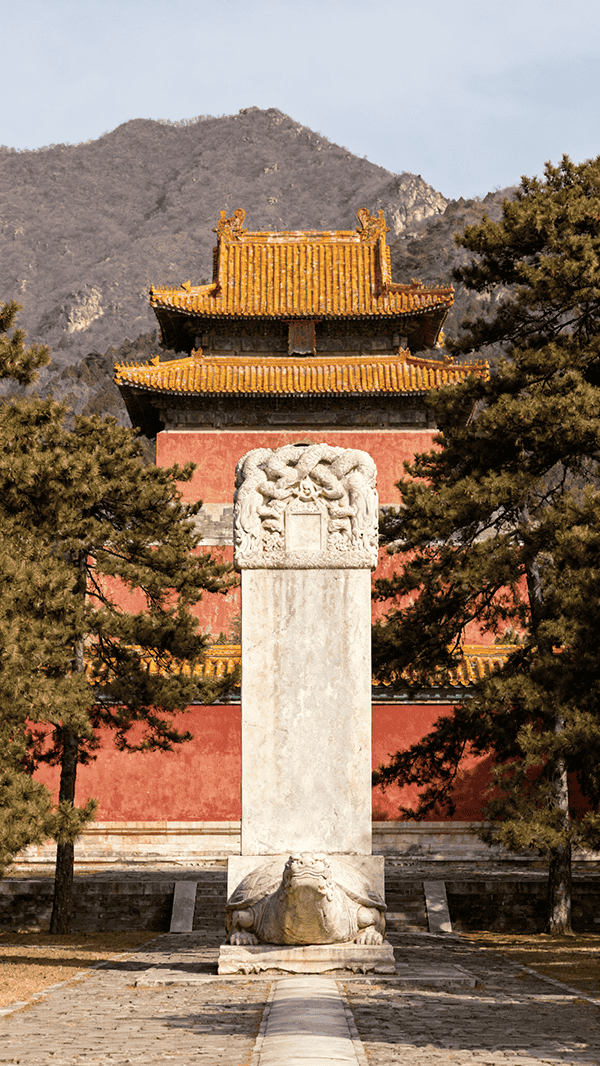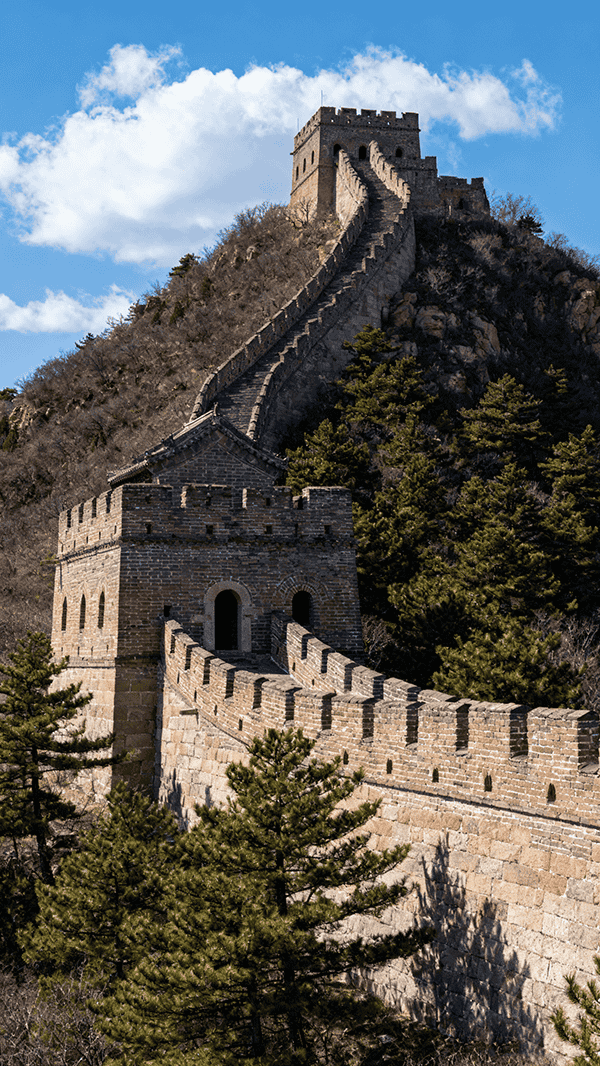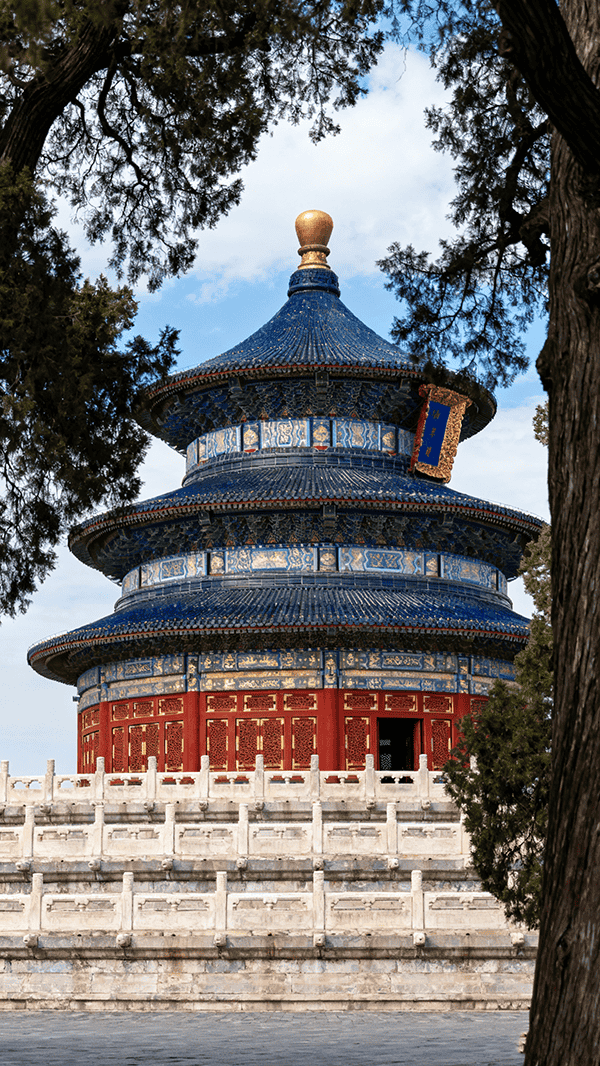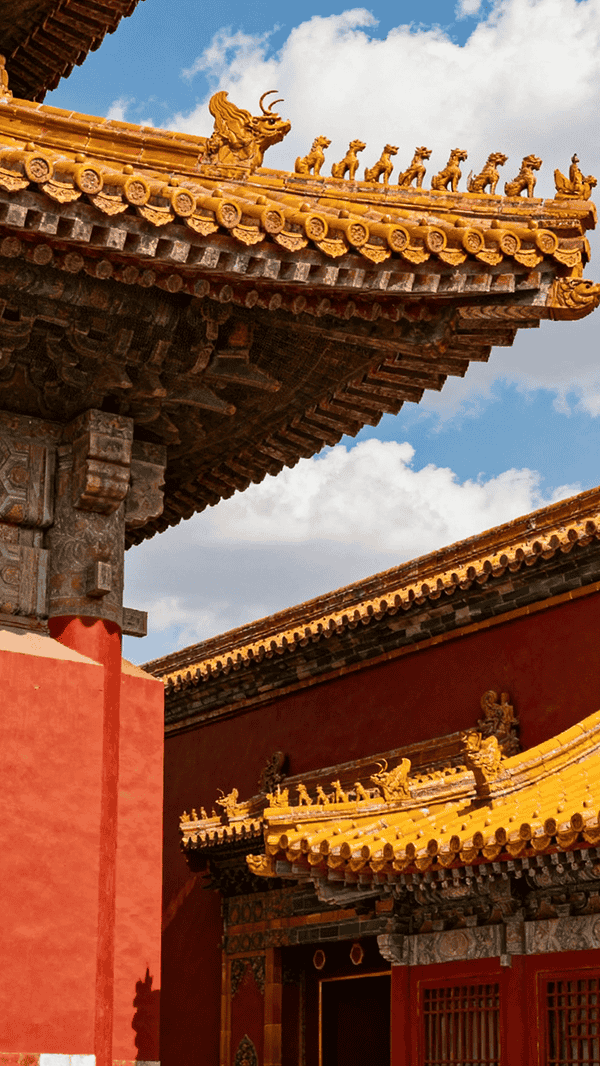Nestled in a valley spanning approximately 120 square kilometers at the southern foot of Tianshou Mountain in the northwestern suburbs of Beijing lie thirteen imperial mausoleums of the Ming Dynasty, collectively known as the world-renowned Ming Tombs. As the largest, most complete, and most numerous complex of imperial mausoleums containing emperors and empresses in China, the Ming Tombs are not only a “living archive” of Ming history but also, through their grand architectural norms and profound cultural significance, a model showcasing the ancient imperial burial system and funerary culture. They were designated as a National Key Cultural Relic Protection Unit in 1961 and inscribed on the UNESCO World Heritage List in 2003. The construction of the Ming Tombs began in the 7th year of the Yongle era (1409 AD) and ended in the 1st year of the Shunzhi era of the Qing Dynasty (1644 AD), spanning 235 years. They are the final resting place for thirteen Ming emperors, including the Yongle Emperor (Zhu Di), the Hongxi Emperor (Zhu Gaozhi), and the Xuande Emperor (Zhu Zhanji), along with twenty-three empresses, two crown princes, over thirty imperial concubines, and one eunuch. The entire burial complex is backed by Tianshou Mountain to the…
The Great Wall of Beijing: The Eastern Giant Dragon Winding for Millennia
Amidst the mountains of Beijing, a majestic “giant dragon” winds its way—crossing ridges, traversing valleys, and standing tall despite centuries of wind and rain: this is the Great Wall of Beijing. As a core section of the Great Wall of China, it is not only an outstanding example of ancient military defense engineering but also carries the profound history of the Chinese nation resisting foreign invasions and guarding their homeland. It has become a cultural symbol of global significance. The construction of the Beijing section of the Great Wall can be traced back to the Spring and Autumn and Warring States periods, when the State of Yan built the earliest sections to defend against northern nomadic tribes. Subsequent dynasties, including the Qin, Han, Northern Wei, and Northern Qi, conducted repairs and expansions. However, the main structure of the Great Wall as we see it today in Beijing was largely built during the Ming Dynasty. After the establishment of the Ming Dynasty, to guard against Mongol incursions, the construction of the Great Wall reached its peak. In the Beijing area alone, dozens of sections such as Huanghuacheng, Mutianyu, Simatai, and Badaling were built, forming a crucial part of the “Nine Defense…
The Temple of Heaven: An Oriental Sanctuary for Dialogue Between Heaven and Earth
In the southeastern part of ancient Beijing stands an architectural complex that carries six hundred years of Chinese civilization—the Temple of Heaven. As the sacred site where emperors of the Ming and Qing dynasties worshipped heaven and prayed for good harvests, it is not only the largest and most complete ancient sacrificial complex dedicated to heaven in China but also, with its exquisite architectural layout and profound cultural significance, a masterpiece exemplifying the concept of “harmony between heaven and humanity” in the history of human civilization. Constructed in the 18th year of the Yongle era of the Ming Dynasty (1420), the Temple of Heaven was initially built concurrently with the Forbidden City and was originally named the “Altar of Heaven and Earth.” It was renamed the Temple of Heaven in the 9th year of the Jiajing era of the Ming Dynasty (1530), dedicated exclusively to the worship of the Supreme Emperor of Heaven. The entire complex spans approximately 2.73 million square meters, equivalent to four times the size of the Forbidden City. Its layout strictly adheres to the traditional philosophical concept of “a circular heaven and a square earth”: the northern part centers on the circular Hall of Prayer for…
The Forbidden City: Millennium Echoes from the Pinnacle of the Purple Realm
In the heart of China’s capital, Beijing, stands a magnificent complex of royal architecture—the Forbidden City. Once the imperial palace of the Ming and Qing dynasties, formerly known as the “Purple Forbidden City,” it now opens its doors to the world as the “Palace Museum.” As one of the largest and most completely preserved ancient wooden structures in the world, the Forbidden City is not only the pinnacle of ancient Chinese palace architecture but also carries the profound memory of 5,000 years of Chinese civilization, serving as a cultural landmark that transcends time and space. Construction of the Forbidden City began in the fourth year of the Yongle era of the Ming Dynasty (1406) and took 14 years to complete. Along with the Temple of Heaven, it was a core structure of Ming Dynasty Beijing. The entire complex spans approximately 720,000 square meters, with a built-up area of 150,000 square meters, housing over 9,000 palace rooms. Its layout strictly adheres to the traditional ritual norms of “central axis symmetry, with the court in front and living quarters in the rear.” A central axis running north-south divides the Forbidden City into eastern and western sections. Along this axis lie key structures…



